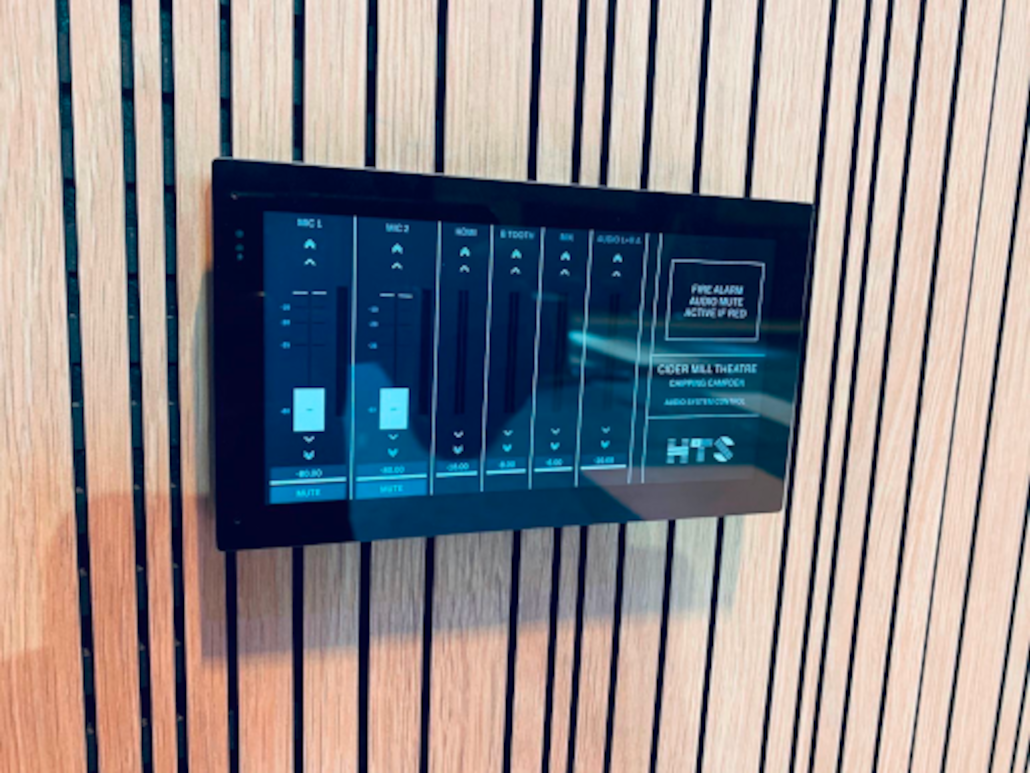Theatrical stage design for the perfect theatre

Ever wondered what's involved in designing the perfect theatre stage?
Well, there's a lot more to it than fancy drapery, background scenery, some props and lighting.
Theatre design is advancing at rapid rates, helped by the surge of new technology on the market. From the stage structure itself to the audience seating, environmental controls, audio, lighting and special effects, theatre design is a multi-faceted specialism offering huge amounts of potential for innovation.
Investing in performing arts
In 2022 music, performance and visual arts contributed an estimated £11.5bn to the UK economy. The government has a keen interest, with them and the National Lottery investing £943mn in the sector in 2021/22.
It's an exciting space to be in, we're seeing cutting-edge new theatres exploding onto the scene, and existing venues being remodelled and modernised to create spectacular venues where creativity can truly emanate.
A specialist theatre design company often works with the director of a theatre to come up with a solution that integrates cutting-edge technology with seamless operation to inspire audiences and deliver truly unique experiences that have never before been seen.
Technical Theatre Stage Design
Our work with performance venues, schools, theatres and venues has led us to design and deliver innovative projects at the cutting edge of theatre design.
Here we share the essential technical design elements for consideration with any theatre design:
Lighting System:
- High-quality lighting fixtures with variable intensity and color options to create diverse atmospheres and effects.
- Automated lighting controls to facilitate smooth transitions during performances.
- Incorporation of spotlights, wash lights, moving lights, and special effects lighting for versatility.
Sound System:
- A top-notch sound reinforcement system that covers the entire auditorium evenly, ensuring excellent audio clarity from all seats.
- High-quality speakers, amplifiers, and subwoofers for a full-range sound experience.
- Advanced audio mixing consoles for precise control over audio levels during performances.
Rigging System:
- A reliable and robust rigging system to support the hanging and movement of stage scenery, curtains, and lighting fixtures.
- Motorized rigging options for safer and more efficient scene changes.
Audio-Visual (AV) and Projection System:
- High-resolution projectors and projection screens for displaying visuals, multimedia, and backdrop imagery.
- Seamless integration of AV equipment with the lighting and sound systems for synchronized effects.
Stage Mechanics:
- Motorized stage lifts and platforms for versatile stage configurations and dynamic performances.
- Trapdoors and elevators for theatrical effects and scene changes.
Acoustic Treatment:
- Comprehensive acoustic design to ensure optimal sound quality and minimal echo or sound distortion.
- Sound-absorbing panels and diffusers strategically placed to improve sound clarity.
Communication Systems:
- Clear and reliable communication systems for stage managers, technicians, and performers during rehearsals and performances.
- Intercom systems with various channels for different departments to facilitate smooth coordination.
Orchestra Pit Lift:
- An adjustable orchestra pit lift that can be raised or lowered as needed, accommodating live music performances or extending the stage area.
Special Effects:
- Integration of special effects systems, such as fog machines, pyrotechnics, and wind machines, for enhancing performances.
Video and Recording Capabilities:
- High-definition video recording and live streaming capabilities for archiving performances and reaching a wider audience.
Control Room:
- A dedicated control room with centralized systems for lighting, sound, and AV operations.
- User-friendly control interfaces for seamless operation by technical staff.
Power Backup:
- Reliable power backup systems, such as uninterruptible power supply (UPS) units or generators, to prevent disruptions during power outages.
Connectivity and Networking:
- Robust networking infrastructure for connecting technical equipment and facilitating remote control and monitoring.
Safety Systems:
- Comprehensive safety systems, including fire alarms, emergency lighting, and emergency shut-off switches for stage equipment.
Accessibility and Assistive Technology:
- Integration of assistive listening systems and captioning for individuals with hearing impairments.
- Accessible control interfaces for technicians and operators with disabilities.
Summary
Technical theatre design should focus on seamless integration, user-friendliness, and the ability to adapt to various performance types and requirements. Working with experienced theatre consultants and technology experts can help ensure that all these elements are thoughtfully incorporated into the theatre's design and implementation.
Get in touch if you’d like help with redesigning your performance venue.
About the Author
Reg Berry is a Director at Henley Theatre Services, working with performance venues and schools to rethink and reshape their environments with the latest technology. With over 20 years of experience in the theatre space, Reg has worked with some of the top performance venues in the UK to come up with amazing technical designs and lead the implementation project to great success.
Connect with Reg

